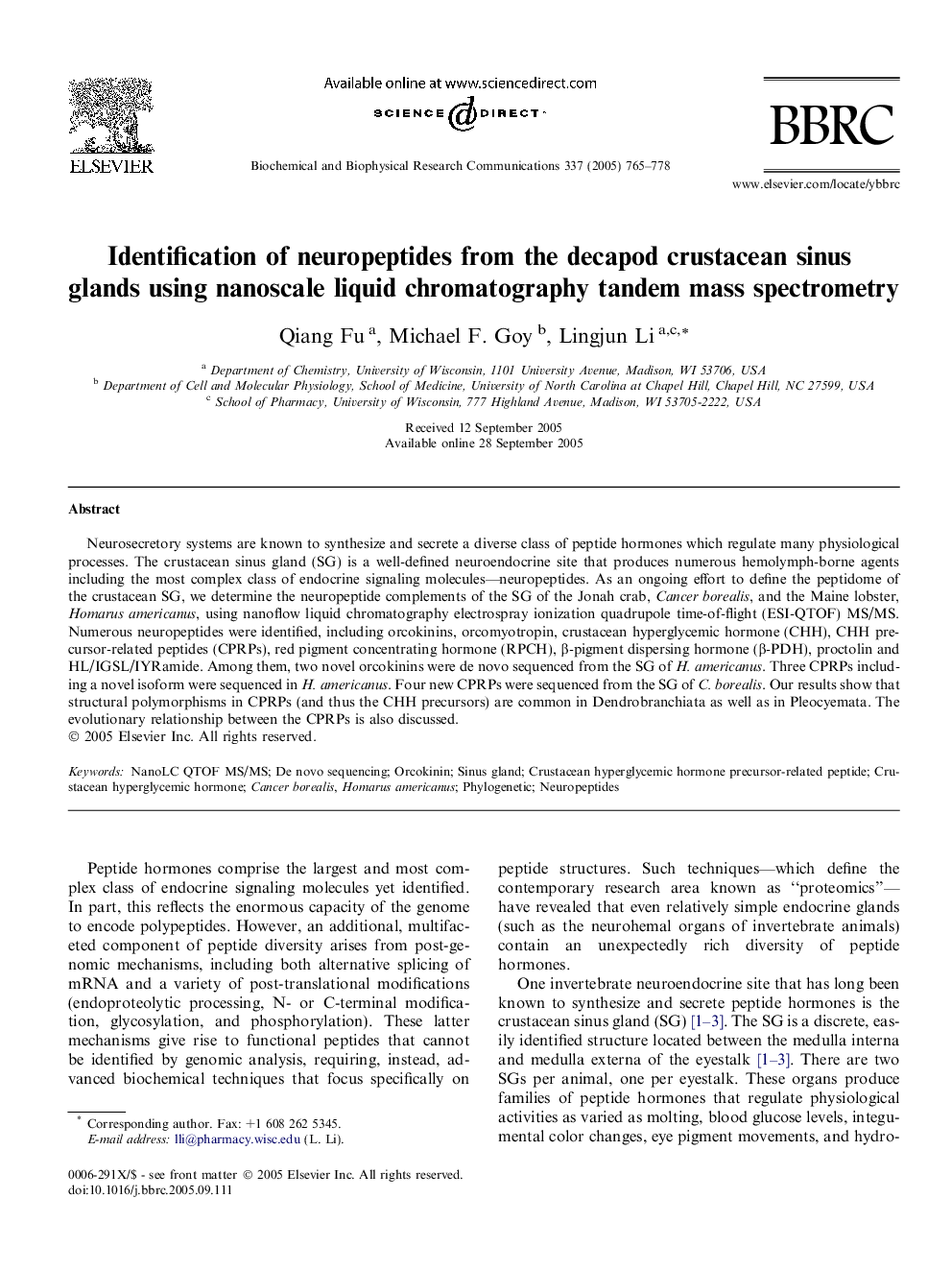| Article ID | Journal | Published Year | Pages | File Type |
|---|---|---|---|---|
| 10767621 | Biochemical and Biophysical Research Communications | 2005 | 14 Pages |
Abstract
Neurosecretory systems are known to synthesize and secrete a diverse class of peptide hormones which regulate many physiological processes. The crustacean sinus gland (SG) is a well-defined neuroendocrine site that produces numerous hemolymph-borne agents including the most complex class of endocrine signaling molecules-neuropeptides. As an ongoing effort to define the peptidome of the crustacean SG, we determine the neuropeptide complements of the SG of the Jonah crab, Cancer borealis, and the Maine lobster, Homarus americanus, using nanoflow liquid chromatography electrospray ionization quadrupole time-of-flight (ESI-QTOF) MS/MS. Numerous neuropeptides were identified, including orcokinins, orcomyotropin, crustacean hyperglycemic hormone (CHH), CHH precursor-related peptides (CPRPs), red pigment concentrating hormone (RPCH), β-pigment dispersing hormone (β-PDH), proctolin and HL/IGSL/IYRamide. Among them, two novel orcokinins were de novo sequenced from the SG of H. americanus. Three CPRPs including a novel isoform were sequenced in H. americanus. Four new CPRPs were sequenced from the SG of C. borealis. Our results show that structural polymorphisms in CPRPs (and thus the CHH precursors) are common in Dendrobranchiata as well as in Pleocyemata. The evolutionary relationship between the CPRPs is also discussed.
Keywords
Related Topics
Life Sciences
Biochemistry, Genetics and Molecular Biology
Biochemistry
Authors
Qiang Fu, Michael F. Goy, Lingjun Li,
